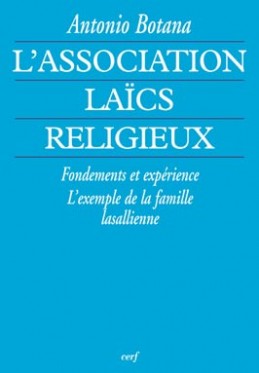Association laïcs-religieux (L')
d'
Antonio Botana
Collection Perspectives de vie religieuse
112 pages - août 2009
11,00€
Dans le cadre théologique et pastoral de ce qu'il est convenu d'appeler l'Église-communion, la communion et la collaboration entre laïcs et religieux se situent aujourd'hui de manière entièrement nouvelle. Tandis que, depuis plusieurs siècles, existaient dans plusieurs familles religieuses des tiers-ordres, au XXe siècle, nombre d'instituts religieux ont donné naissance à ce qu'on appelle les « laïcs associés ». Ainsi, les charismes des instituts religieux sont aujourd'hui assumés par des chrétiens de différentes identités : laïcs, femmes et hommes, religieuses et religieux, non-prêtres et prêtres. Ces charismes sont aujourd'hui des lieux très vivants de fraternité et de communion. Ils nécessitent la coexistence de chacun, une profonde reconnaissance mutuelle et la capacité à travailler ensemble à la mission de l'institut en toute confiance. C'est pourquoi des évolutions de sensibilité, de conception et de structures sont indispensables. L'exemple de la famille lasallienne pour l'organisation de cette reconnaissance mutuelle et de cette collaboration laïcs-religieux est intéressant et significatif pour l'ensemble des congrégations de vie apostolique. La réflexion théologique du frère Antonio Botana est suggestive. Elle pourra aider tous ceux qui œuvrent dans ces « associations » et à la communion laïcs-religieux.
--
Within the theological and pastoral framework of what is commonly referred to as the Communion Church, communion and collaboration between secular members and clerics has been totally renewed today. For several centuries, and in more than one religious family, third orders have existed. But in the 20th century, many religious institutions created a status called ‘associate’ lay members. Consequently, the charismata of religious institutions are assumed today by different types of Christians: lay people, men and women, nuns and monks, priests or not. They form lively and fraternal instances of communion. They require coexistence, a deep mutual recognition and the capacity to work confidently together in the service of their mutual mission. That is why an evolution of concepts and structures is indispensible. To study how mutual recognition and secular-cleric collaboration might be organised, the example of the Lasallian brothers is particularly interesting and significant to all congregations of apostolic life. Brother Antonio Botana’s theological reflection is fascinating. It will be valuable to all those who work in such ‘associations’ and a useful contribution to the secular-clerical communion.
- Dimensions : 135x195x8
- ISBN : 9782204088510
- Poids : 140 grammes
Avec la collaboration de :
Pierre Josse
